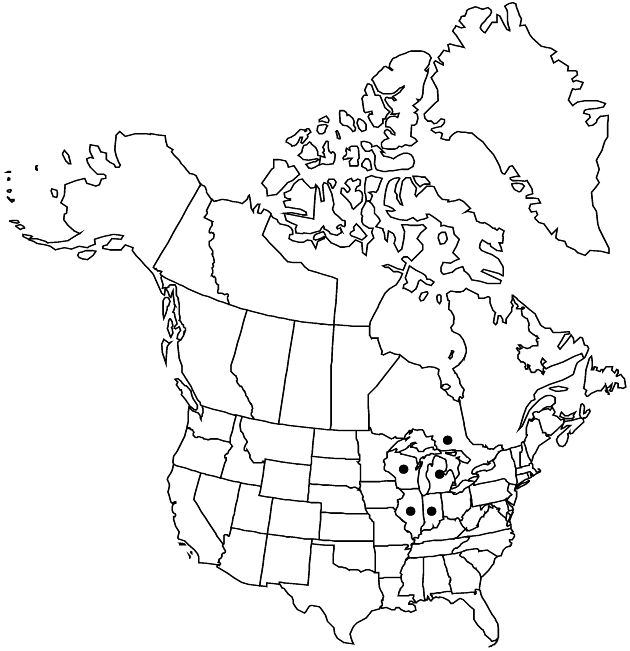Cirsium pitcheri
Fl. N. Amer. 2: 456. 1843.
Biennials or short-lived monocarpic perennials, 20–100 cm; taproots long. Stems 1 or few, erect, densely gray-tomentose; branches 0 to several, ascending to spreading. Leaves: blades elliptic to obovate, 10–30 × 8–14 cm, deeply divided nearly to midveins, lobes ascending to spreading, linear, remote, margins revolute, entire or minutely spinulose, main spines 1–2 mm, faces gray-tomentose, more densely so abaxially; basal present or withered at flowering, petiolate; principal cauline well distributed, bases decurrent as linear-lobed to spiny wings 1–3 cm; distal cauline well developed. Heads 1–20+ in corymbiform arrays. Peduncles 0–5 cm. Involucres ovoid to campanulate, 2–3 × 2–3 cm, loosely arachnoid on phyllary margins or glabrate. Phyllaries in 6–8 series, imbricate, ovate-lanceolate (outer) to linear-lanceolate (inner), abaxial faces with narrow glutinous ridge; outer and middle appressed, acute, spines ascending to spreading, slender, 1–2(–3) mm; apices of inner often flexuous, flattened, spineless, scabrid. Corollas dull white or pinkish-tinged (rarely rich purple), 20–30 mm, tubes 8.5–15 mm, throats 4.5–10 mm, lobes 3–8 mm; style tips 3.5–5.5 mm. Cypselae light brown, sometimes with darker streaks, 6–7.5 mm, apical collars lighter colored, very narrow; pappi 15–30 mm, usually noticeably shorter than corolla. 2n = 34.
Phenology: Flowering spring–summer (May–Sep).
Habitat: Sand dunes and beaches
Elevation: 180–200 m
Distribution

Ont., Ill., Ind., Mich., Wis.
Discussion
Cirsium pitcheri is endemic to beach and dune habitats around lakes Huron, Michigan, and Superior. It has been extirpated from portions of its former range at the southern end of Lake Michigan. It is threatened by foot traffic, off-road vehicular activity, and clearing and development of beachside habitats. It is in the Center for Plant Conservation’s National Collection of Endangered Plants.
Selected References
None.